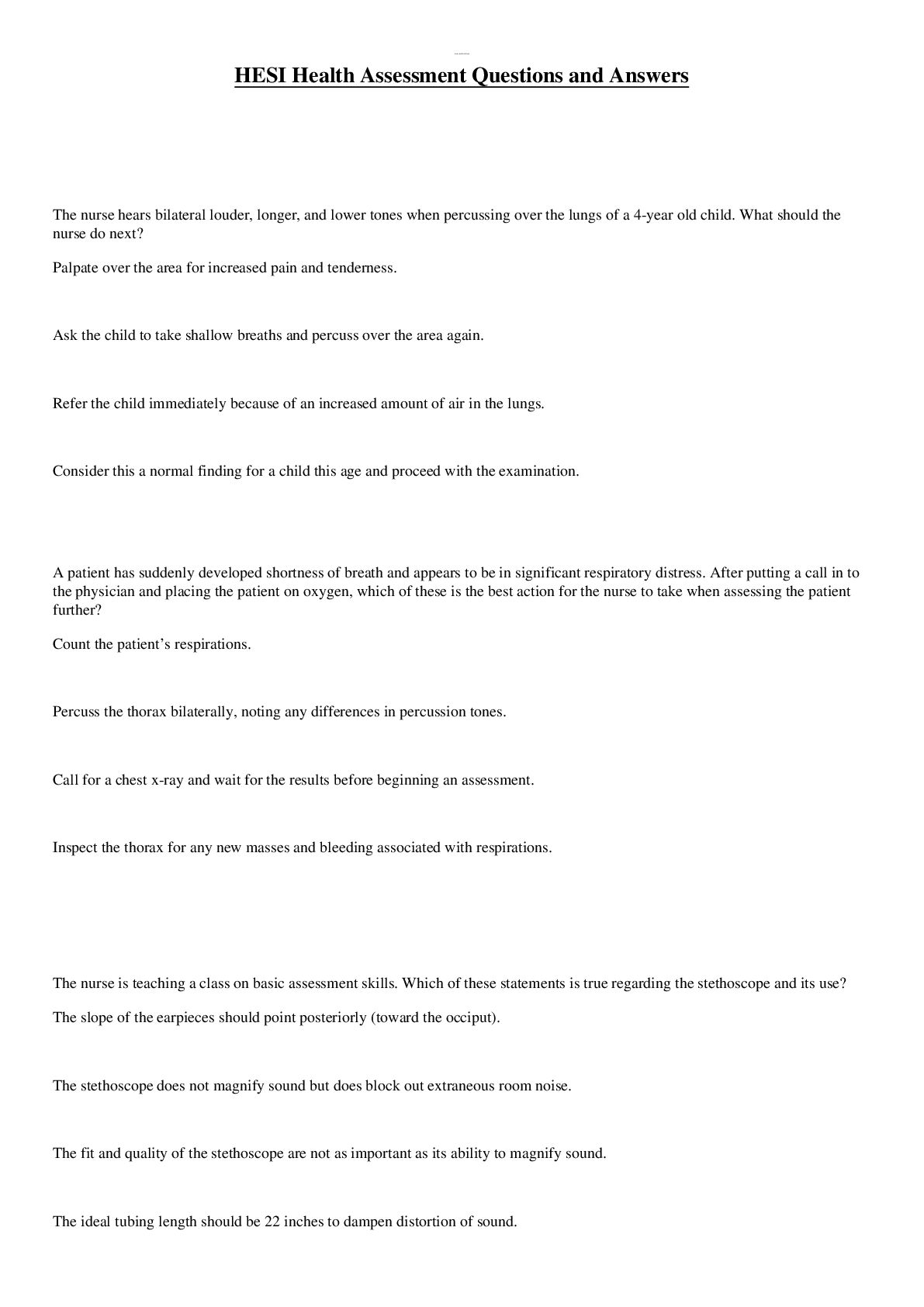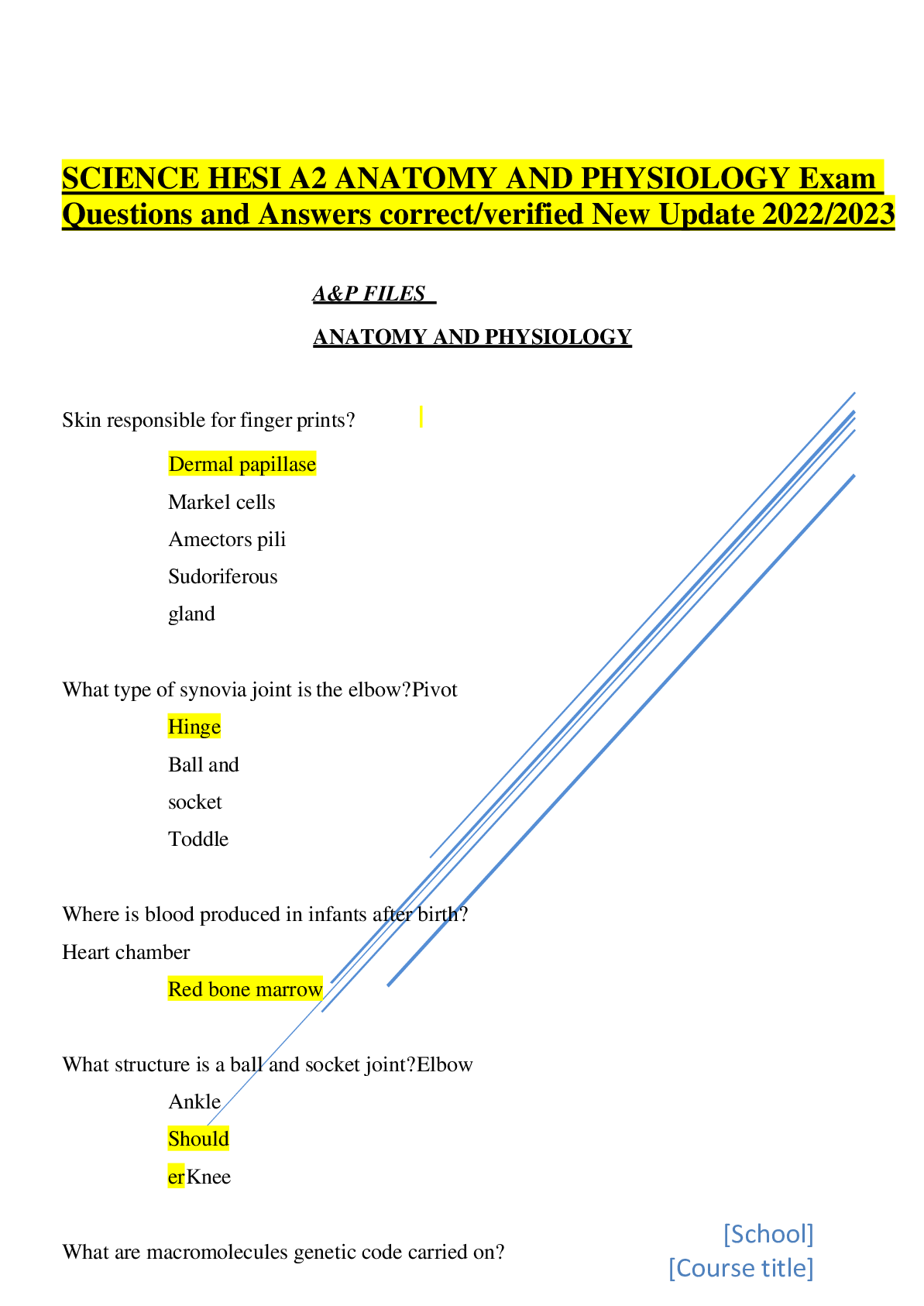*NURSING > HESI > Pharmacology HESI Practice Exam. This document contains 100+ Most commonly Tested Questions and Answ (All)
Pharmacology HESI Practice Exam. This document contains 100+ Most commonly Tested Questions and Answers with rationale
Document Content and Description Below
m The health care provider prescribes carbamazepine for a child whose tonic-clonic seizures have been poorly controlled. The nurse informs the mother that the child must have blood tests every week.... The mother asks why so many blood tests are necessary. Which complication is assessed through frequent laboratory testing that the nurse should explain to this mother? Myelosuppression Rationale: Myelosuppression is the highest priority complication that can potentially affect clients managed with carbamazepine therapy. The client requires close monitoring for this condition by weekly laboratory testing. Hepatic function may be altered, but this complication does not have as great a potential for occurrence as Myelosupression A client is prescribed a cholinesterase inhibitor, and a family member asks the nurse how this medication works. Which pharmacophysiologic explanation should the nurse use to describe this class of drug? Improves nerve impulse transmission Rationale: Cholinesterase inhibitors work to increase the availability of acetylcholine at cholinergic synapses, which aids in neuronal transmission and assists in memory formation. A client is ordered 22 mg of gentamicin by IM injection. The drug is available in 20 mg/2 mL. How many milliliters should be administered? 2.2 mLRationale: (22 mg/20 mg) × (x mL/2 mL) = 22x = 40 x = 2.2 mL In addition to nitrate therapy, a client is receiving nifedipine, 10 mg PO every 6 hours. The nurse should plan to observe for which common side effect of this treatment regimen? Hypotension Rationale: Nifedipine reduces peripheral vascular resistance and nitrates produce vasodilation, so concurrent use of nitrates with nifedipine can cause hypotension with the initial administration of these agents. Which response best supports the observations that the nurse identifies in a client who is experiencing a placebo effect? Psychological response to inert medication Rationale: The placebo effect is a response in the client that is caused by the psychological impact of taking an inert drug that has no biochemical properties. A placebo effect can be therapeutic, negative, or ineffective but provides no cure or benefit to the client's progress. The placebo effect may evoke behavioral changes but does not affect neurochemical psychotropic changes. Malingering and drug seeking are behaviors that a client exhibits to obtain treatment for nonexistent disorders or obtain prescription medications. A 42-year-old client is admitted to the emergency department after taking an overdose of amitriptyline in a suicide attempt. Which drug should the nurse plan to administer to reverse the cardiac and central nervous system effects of amitriptyline?Sodium bicarbonate Rationale: Sodium bicarbonate is an effective treatment for an overdose of tricyclic antidepressants such as amitriptyline to reverse QRS prolongation. A 67-year-old client is discharged from the hospital with a prescription for digoxin, 0.25 mg daily. Which instruction should the nurse include in this client's discharge teaching plan? Take and record radial pulse rate daily. Rationale: Monitoring pulse rate is very important when taking digoxin. The client should be further instructed to report pulse rates <60 or >110 beats/min and to withhold the dosage until consulting with the health care provider in such a case. Vision change is an indication of drug toxicity, and the client should be instructed to report this immediately. A 55-year-old client was diagnosed with schizophrenia 5 years earlier. Numerous hospitalizations have occurred since the diagnosis because of noncompliance with the prescribed medication regimen. Which drug might work best for this particular client? Fluphenazine decanoate Rationale: Fluphenazine, an antipsychotic drug that can be given IM, has a rapid onset (1 to 2 hours) and a long duration of action (up to 3 or 4 weeks), so it would be the drug of choice for a noncompliant psychotic client. Chlorpromazine HCl is an antipsychotic drug used to treat schizophrenia and is usually administered PO (IM doses are short-acting). The client must be compliant in taking this drug for it to be effective. Lithium carbonate is most effective with manic and depressive bipolar affective disorders. Diazepam is an anti-anxiety drug and would not be effective for a psychotic disorder. A client is being discharged with a prescription for sulfasalazine to treat ulcerative colitis. Which instruction should the nurse provide to this client prior to discharge? Drink at least eight glasses of fluid a dayRationale: Adequate hydration is important for all sulfa drugs because they can crystallize in the urine. If possible, the drug should be taken after eating to provide longer intestinal transit time. Maintaining good oral hygiene is important for other medications, such as phenytoin, because of the incidence of gingival hyperplasia, Discontinue use of the drug gradually is important for steroid administration. Amoxicillin, 500 mg PO every 8 hours, is prescribed for a client with an infection. The drug is available in a suspension of 125 mg/5 mL. How many milliliters should the nurse administer with each dose? 20 mL Rationale: 500 mg/x mL = 125 mg/5 mL 125x = 2500 x = 20 mL A client with acute lymphocytic leukemia is to begin chemotherapy today. The health care provider's prescription specifies that ondansetron is to be administered IV 30 minutes prior to the infusion of cisplatin. What is the rationale for administering Zofran prior to the chemotherapy induction? Reduction or elimination of nausea and vomiting Rationale: Ondansetron is a type 3 receptor (5-HT3) antagonist that is recognized for improved control of acute nausea and vomiting associated with chemotherapy. 5-HT3 antagonists are most effective when administered IV prior to the induction of the chemotherapeutic agent(s). A client with chronic gouty arthritis is talking allopurinol, 100 mg PO daily. Which laboratory serum level should the nurse report to the health care provider to determine the therapeutic outcome? Uric acid level Rationale: The primary therapeutic outcome associated with allopurinol therapy is reduced serum uric acid levels with a lower frequency of acute gouty attacks, so uric acid level should be reported to the health care provider.The nurse is reviewing prescribed medications with a female client who is preparing for discharge. The client asks the nurse why the oral dose of an opioid analgesic is higher than the IV dose that she received during hospitalization. Which response is best for the nurse to provide? Oral forms of drugs must pass through the liver first, where more of the dose is metabolized. Rationale: Oral doses of medication are usually larger than parenteral doses to compensate for the first-pass effect in the liver after oral administration, which metabolizes more of the drug's dose before affecting its therapeutic response. Although recommended dose ranges for adults should be individualized, a client's pain should be controlled at discharge. The nurse performs a client assessment prior to the administration of a prescribed dose of dipyridamole and aspirin PO. The nurse notes that the client's carotid bruit is louder than previously assessed. Which action should the nurse implement? Administer the prescribed dose as scheduled. Rationale: A carotid bruit reflects the degree of blood vessel turbulence, which is typically the result of atherosclerosis. Aspirin is prescribed to reduce platelet aggregation and should be administered to this client, who is at high risk for thrombus occlusion. A client experiencing dysrhythmias is given quinidine, 300 mg PO every 6 hours. The nurse plans to observe this client for which common side effect associated with the use of this medication? Diarrhea Rationale: The most common side effects associated with quinidine therapy are gastrointestinal complaints, such as diarrhea. A male client with prostatic carcinoma has arrived for his scheduled dose of docetaxel chemotherapy. What symptom would indicate a need for an immediate response by the nurse prior to implementing another dose of this chemotherapeutic agent? A cough that is new and persistentRationale: A cough that is new and persistent is an adverse effect that is immediately life threatening. Severe fluid retention can cause pleural effusion (requiring urgent drainage), dyspnea at rest, cardiac tamponade, or pronounced abdominal distention (caused by ascites). Persistent nausea and vomiting, Fingernail and toenail changes and Increasing weakness and neuropathy are all adverse effects from chemotherapy and need to be monitored consistently. The nurse is preparing to administer a secondary infusion of a dobutamine solution to a client. The nurse notes that the solution is brown in color. Which action should the nurse implement? Administer the drug if the solution's reconstitution time is <24 hours. Rationale: The color of the dobutamine solution is normal, and the solution should be administered within 24 hours after reconstitution, so the time of reconstitution should be verified before administering the solution of medication. Which instruction should the nurse include in the teaching plan for a client who is receiving phenytoin for seizure control? Brush and floss teeth daily. Rationale: Brushing and flossing the teeth daily prevents gingival hyperplasia (gum disease) that is common with long-term phenytoin therapy. When providing client teaching about the administration of methylphenidate (Ritalin) to a parent of a child diagnosed with ADHD, which instruction should the nurse include in the teaching plan? Offer the child the medication with breakfast and after the child eats lunch. Rationale: Administering the medication at breakfast and after lunch provides the correct spacing of the doses to maximize the child's attention span and helps prevent the appetite suppression associated with the drug. Doses should be spaced at 6-hour intervals. A dose given mid-afternoon is likely to increase insomnia [Show More]
Last updated: 1 year ago
Preview 1 out of 41 pages
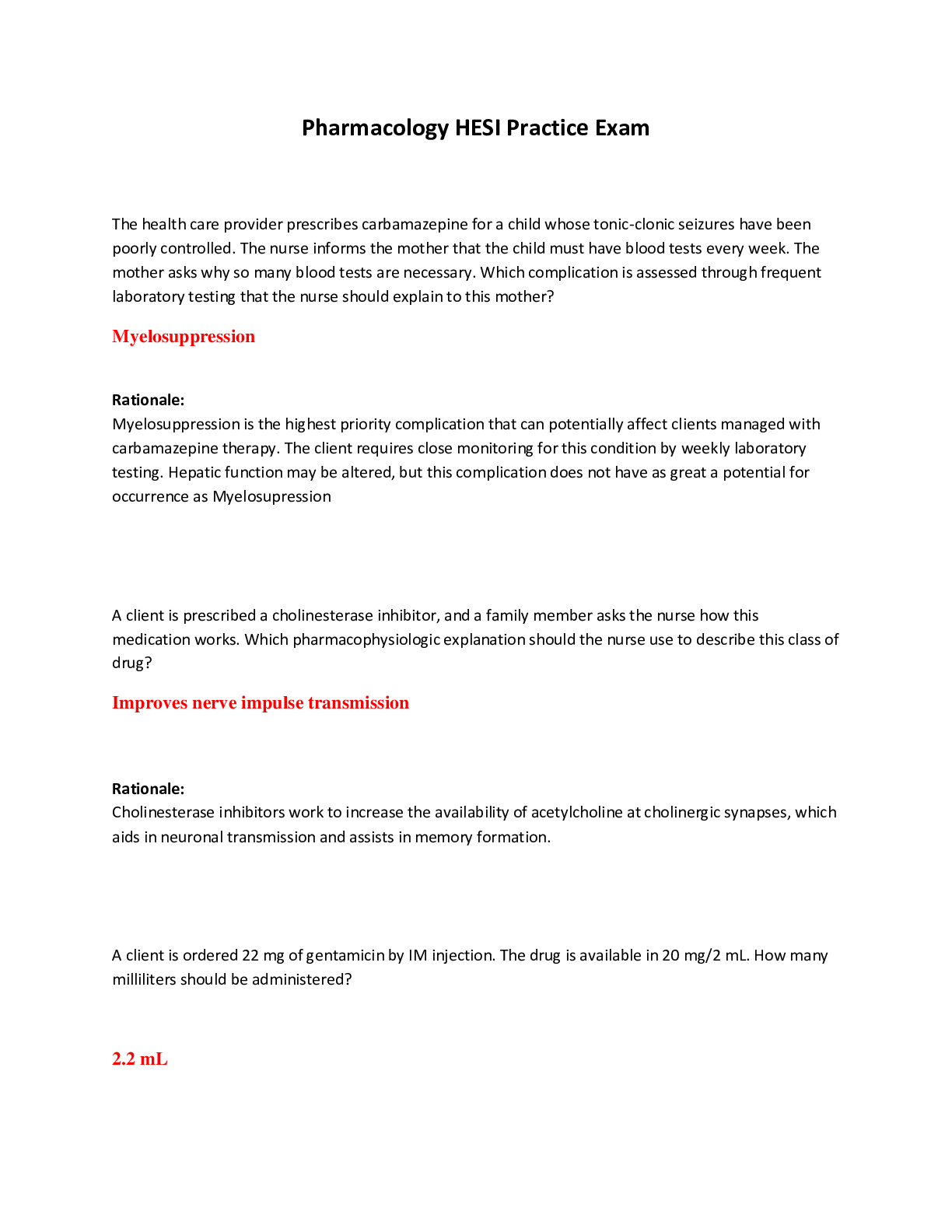
Reviews( 0 )
Document information
Connected school, study & course
About the document
Uploaded On
Mar 26, 2021
Number of pages
41
Written in
Additional information
This document has been written for:
Uploaded
Mar 26, 2021
Downloads
0
Views
55


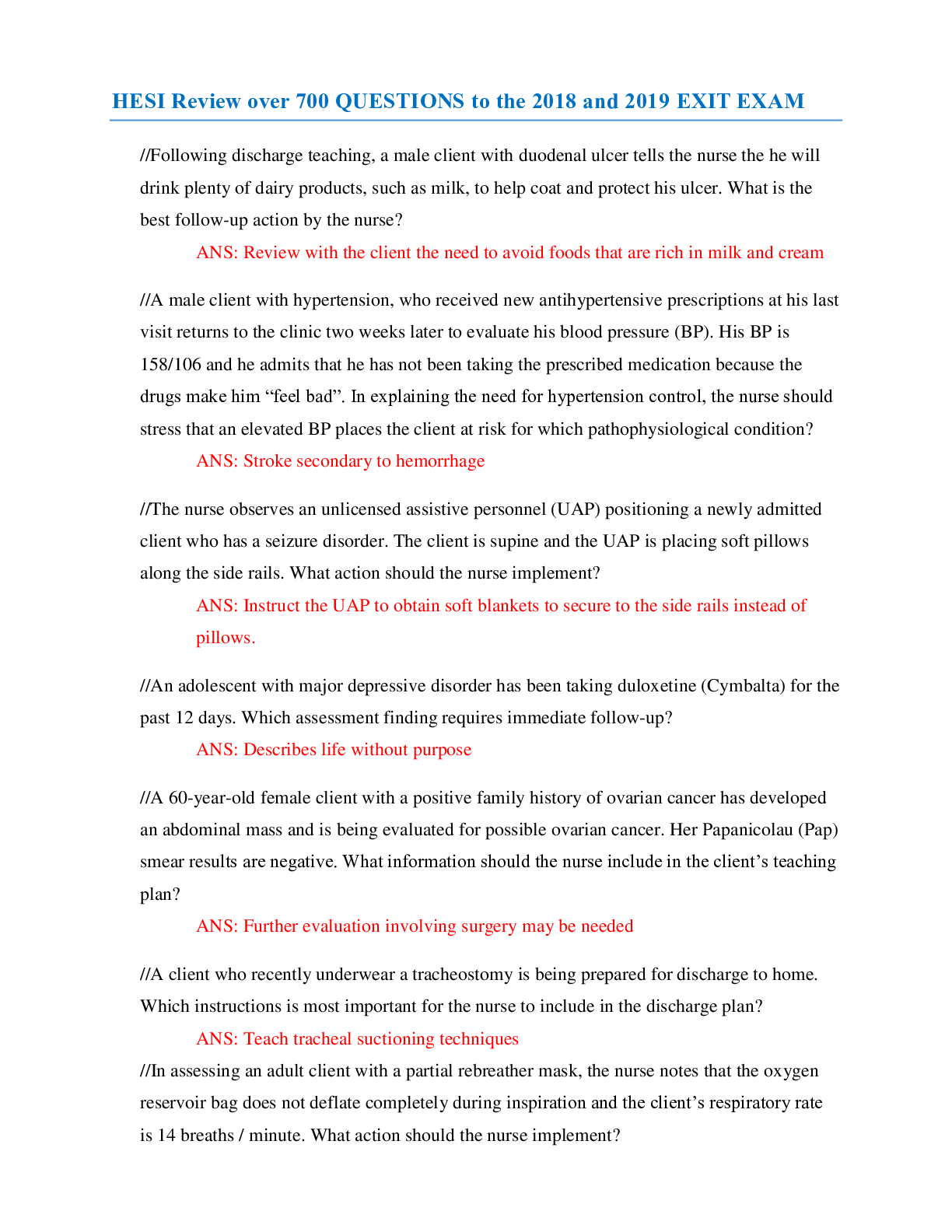

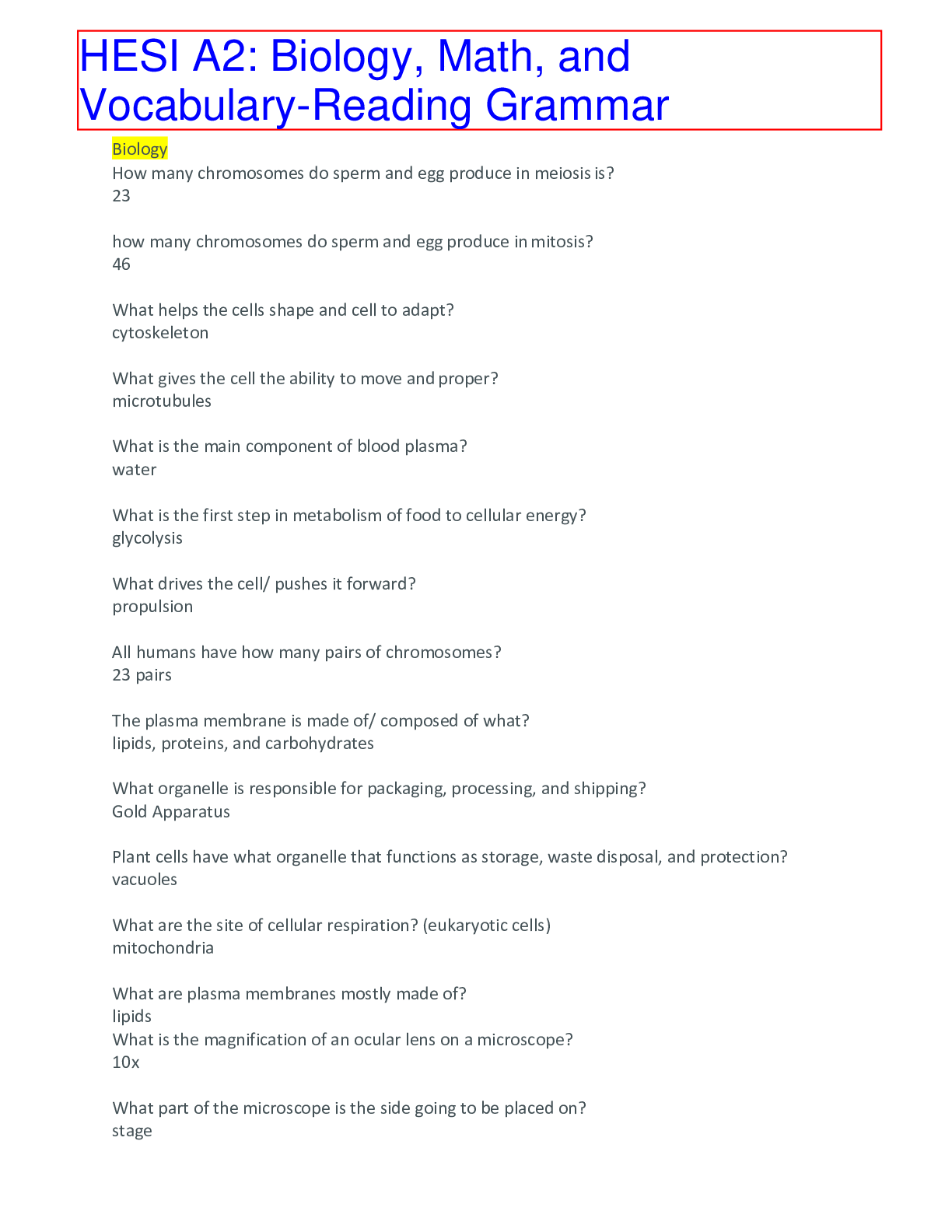
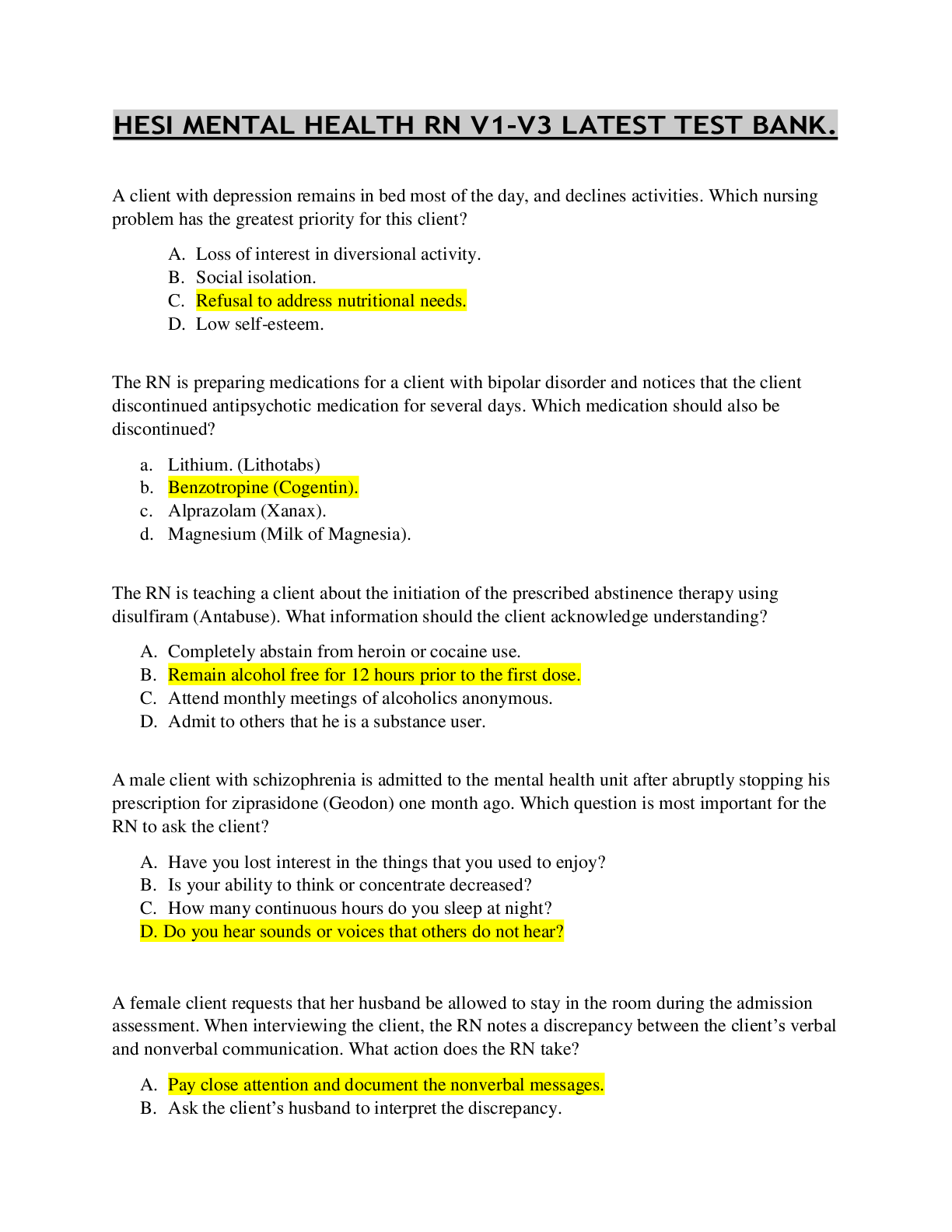
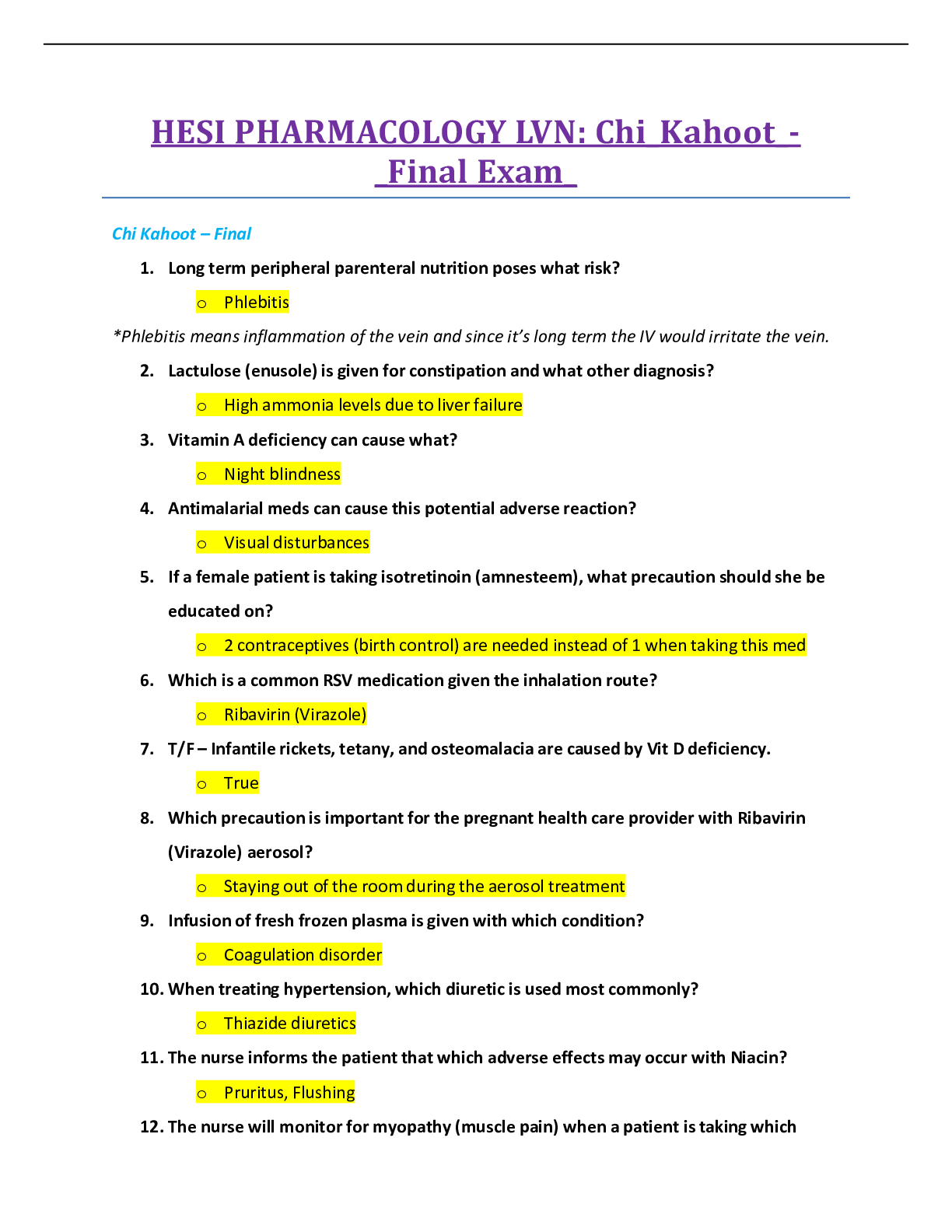
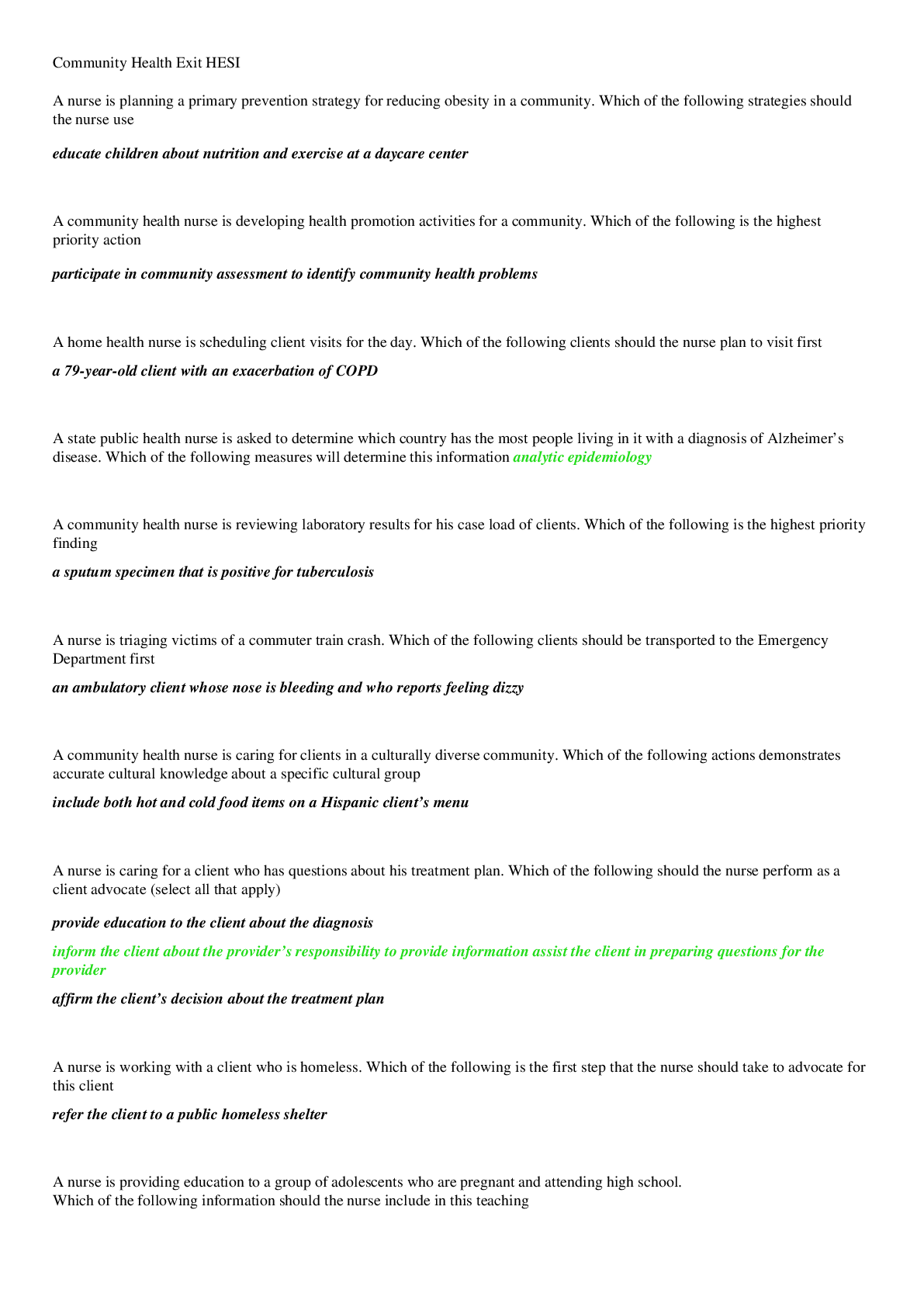


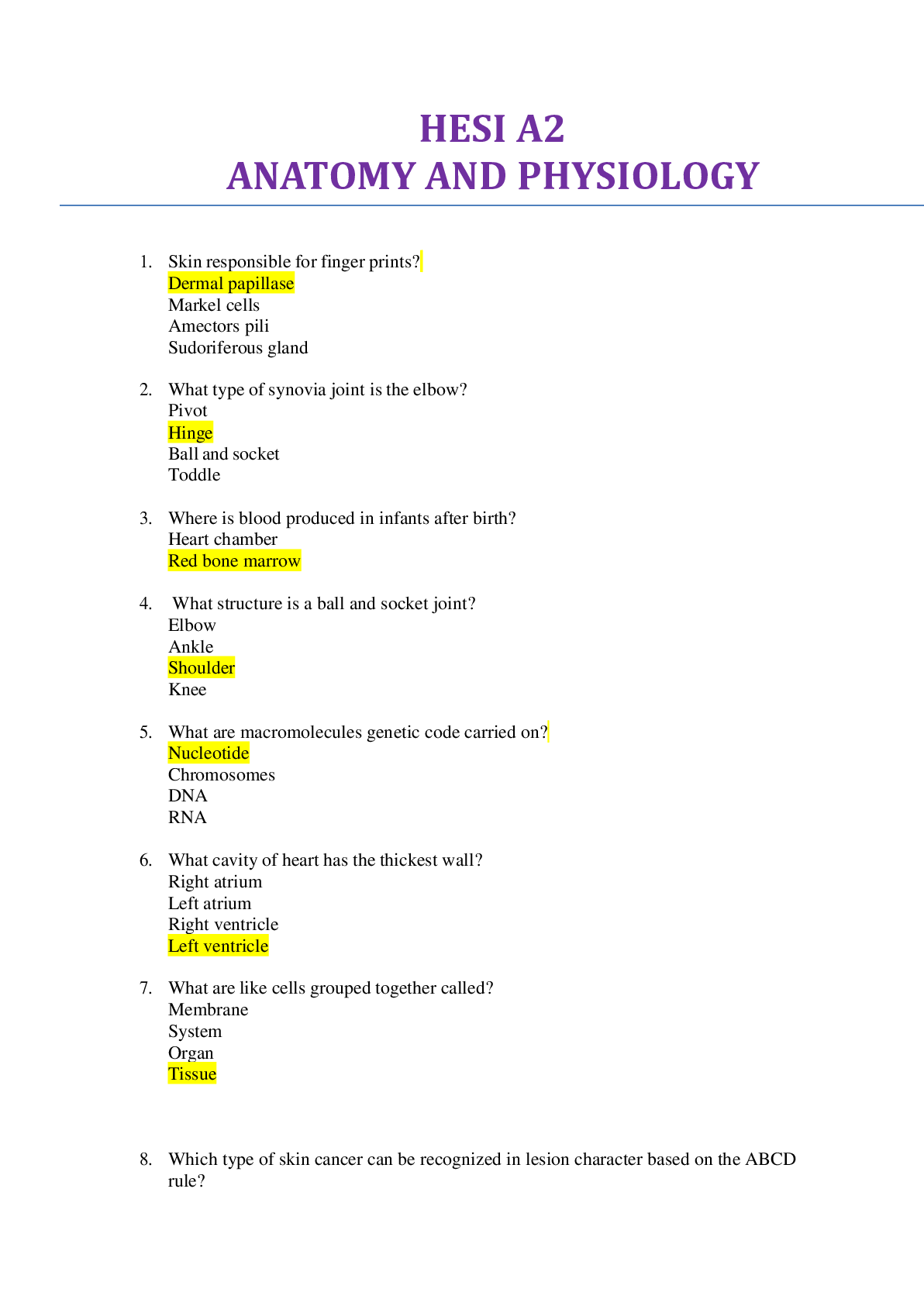
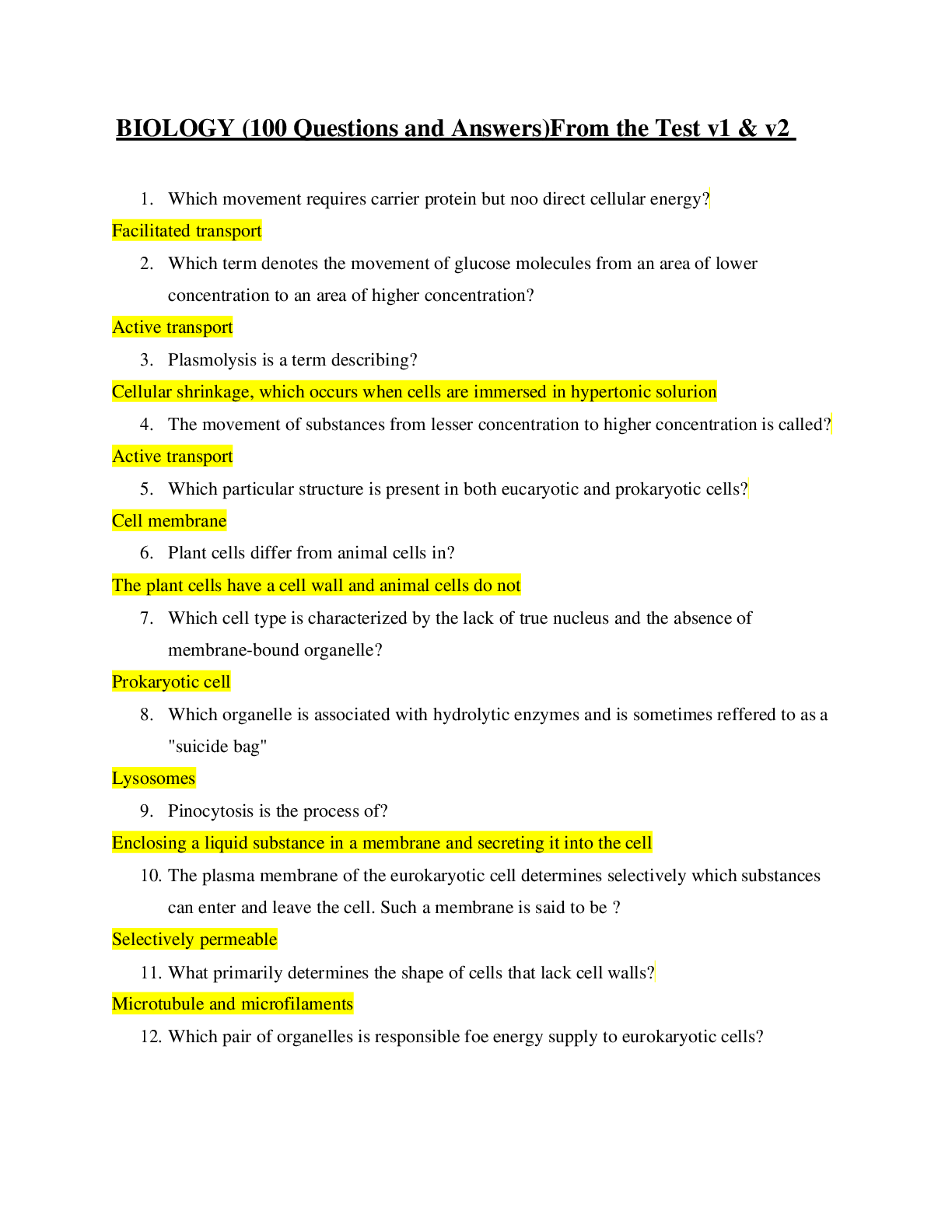
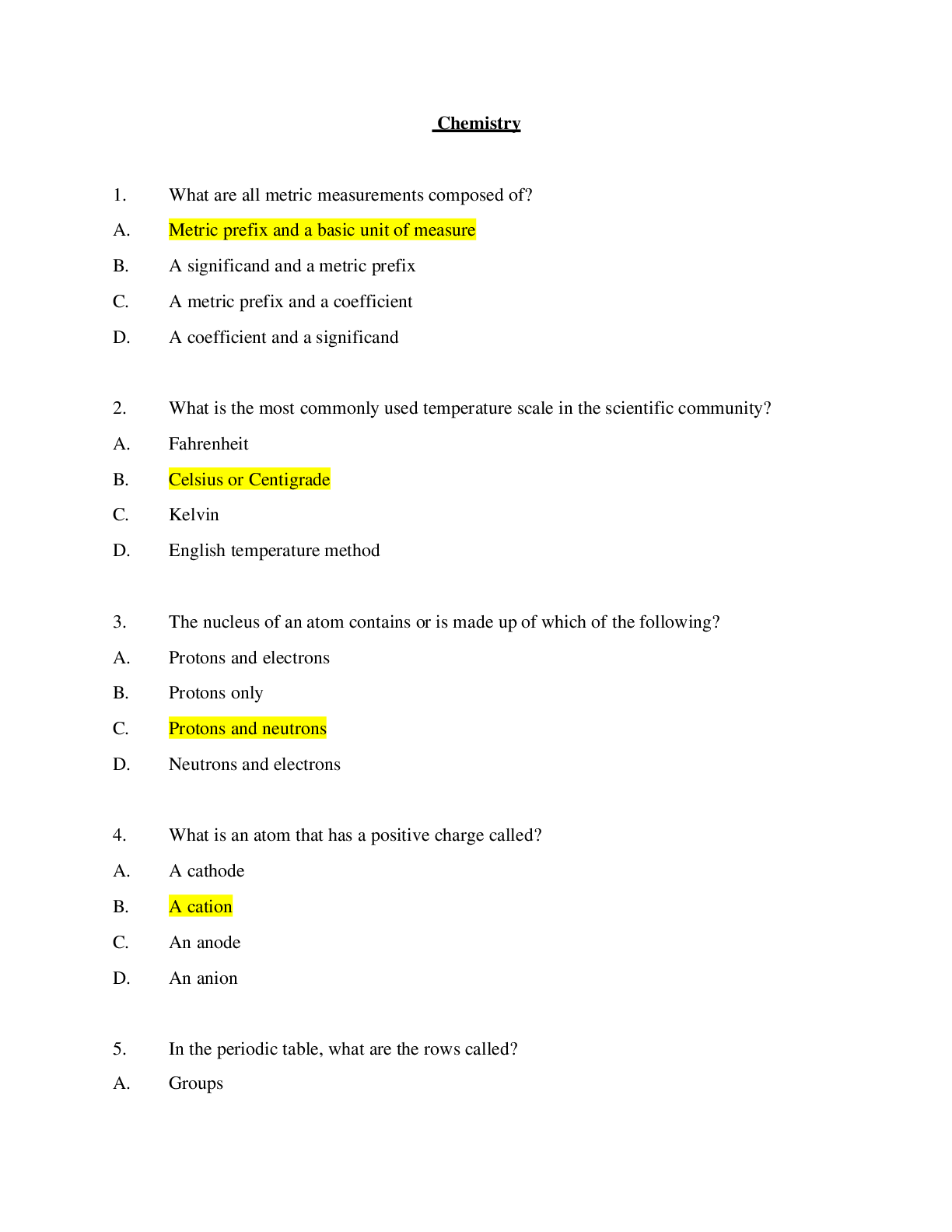
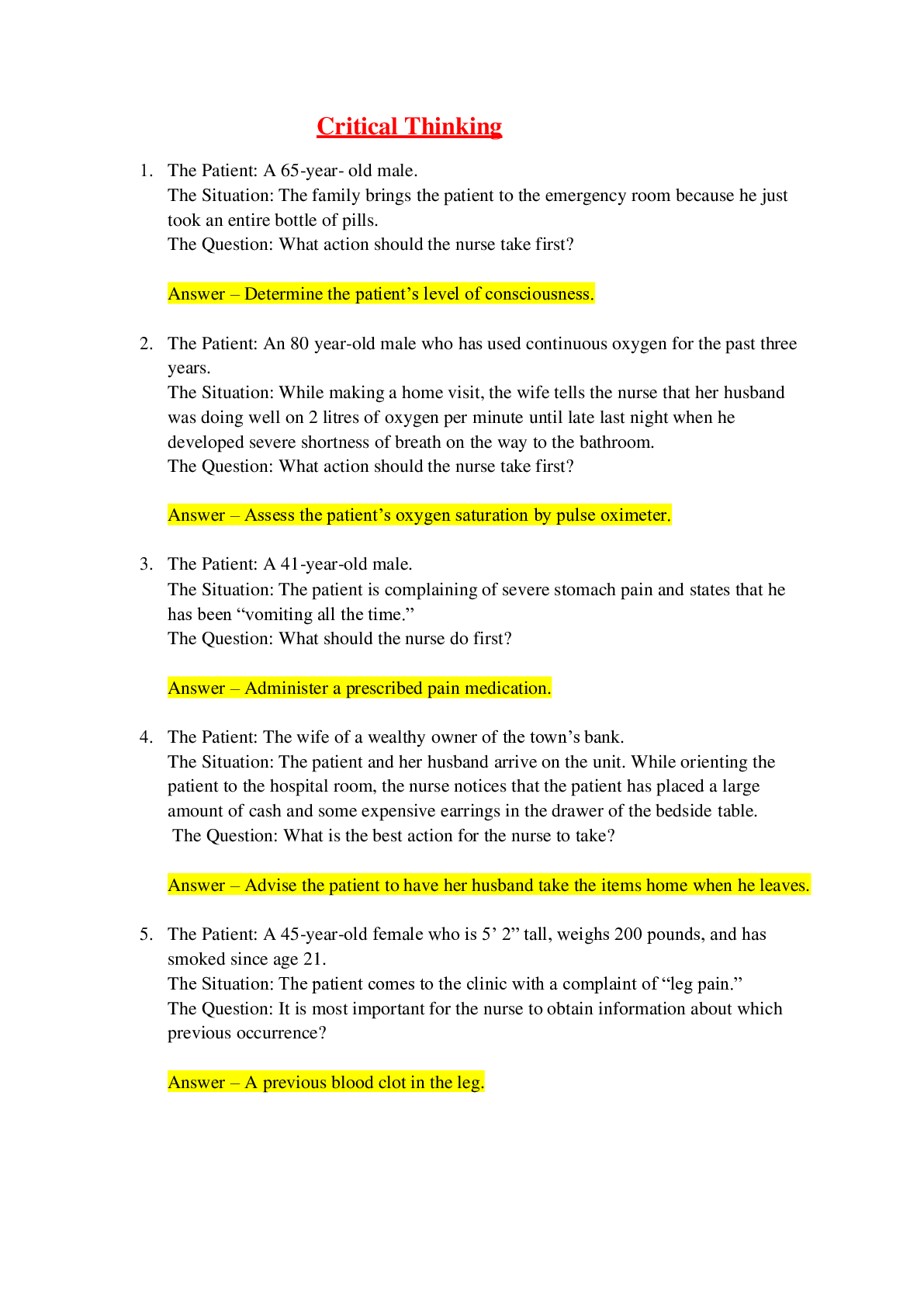
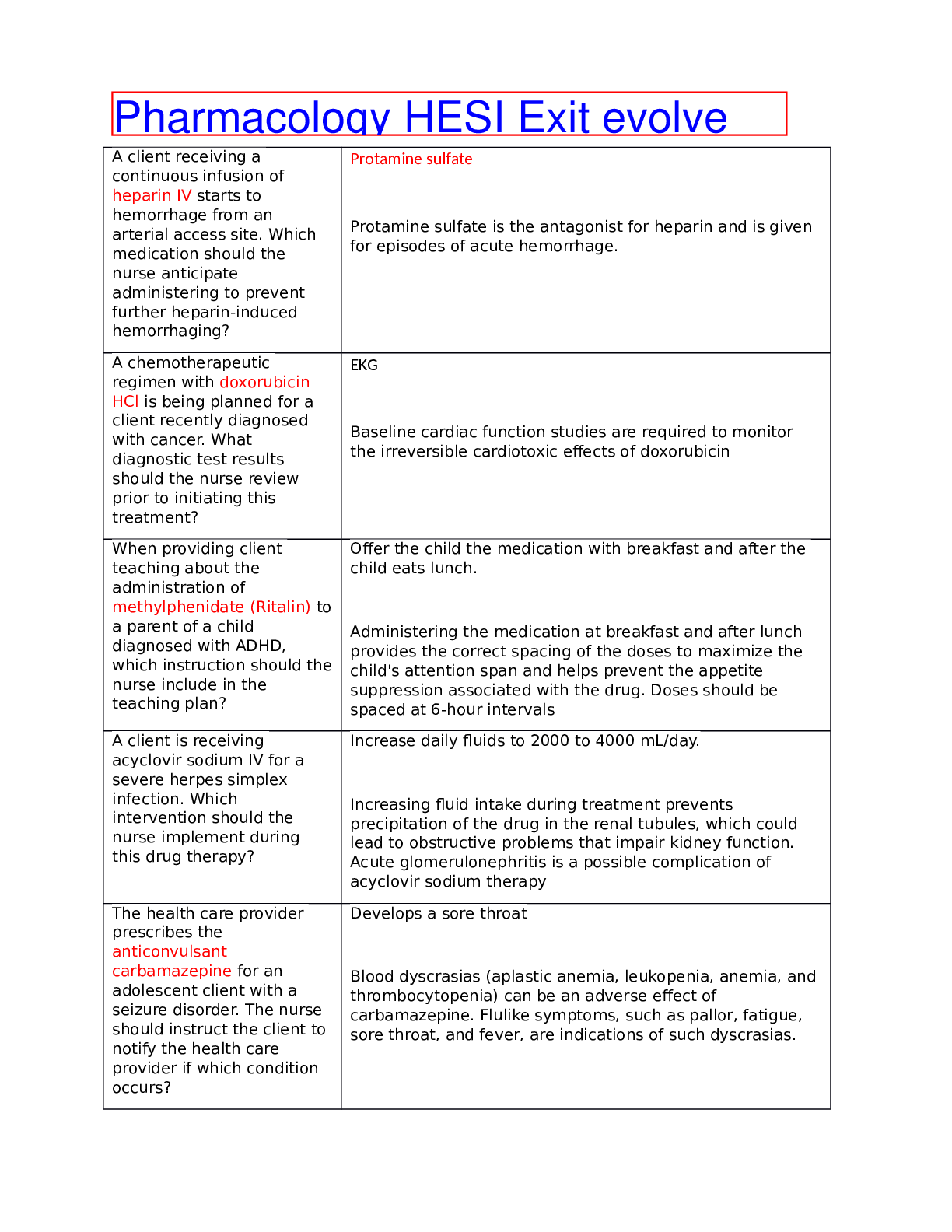
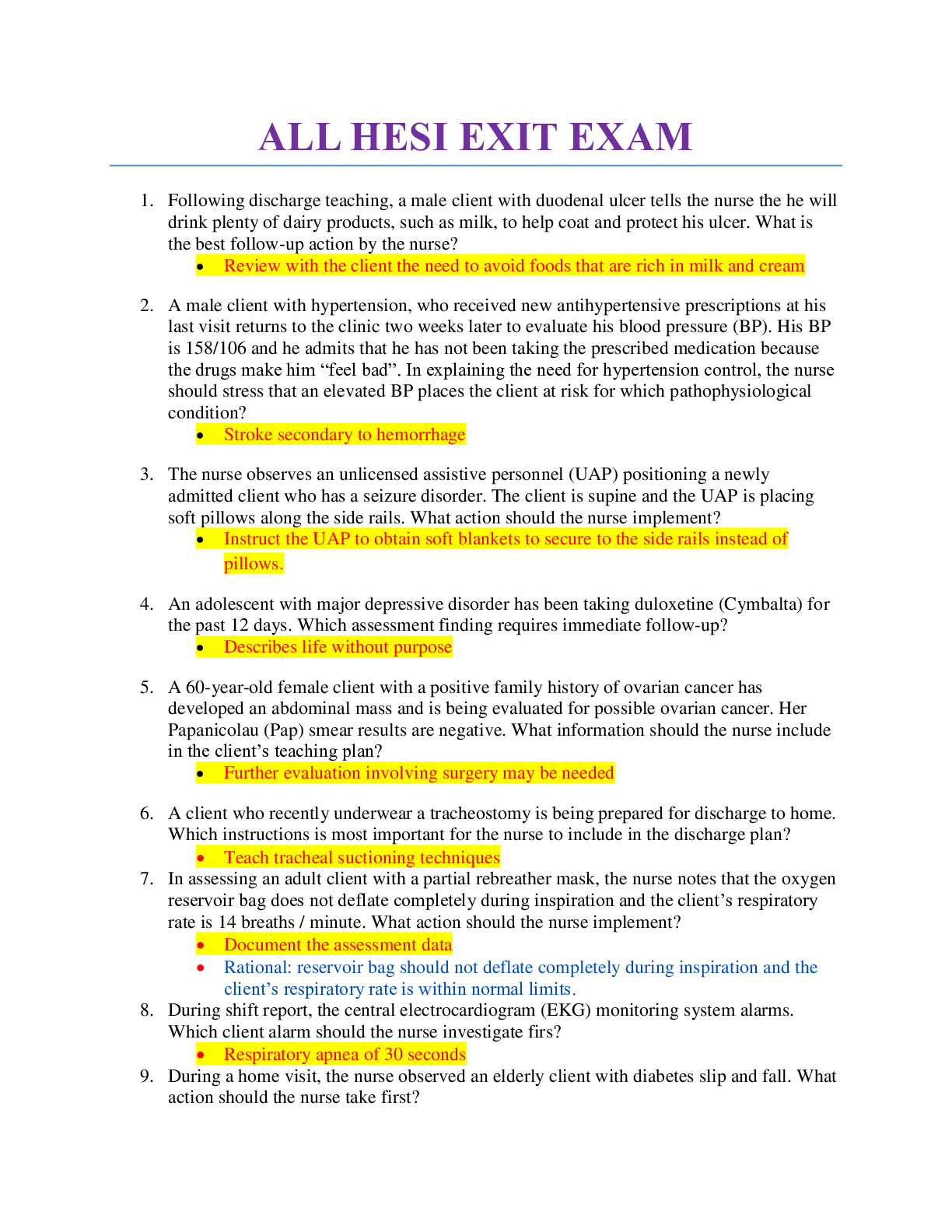





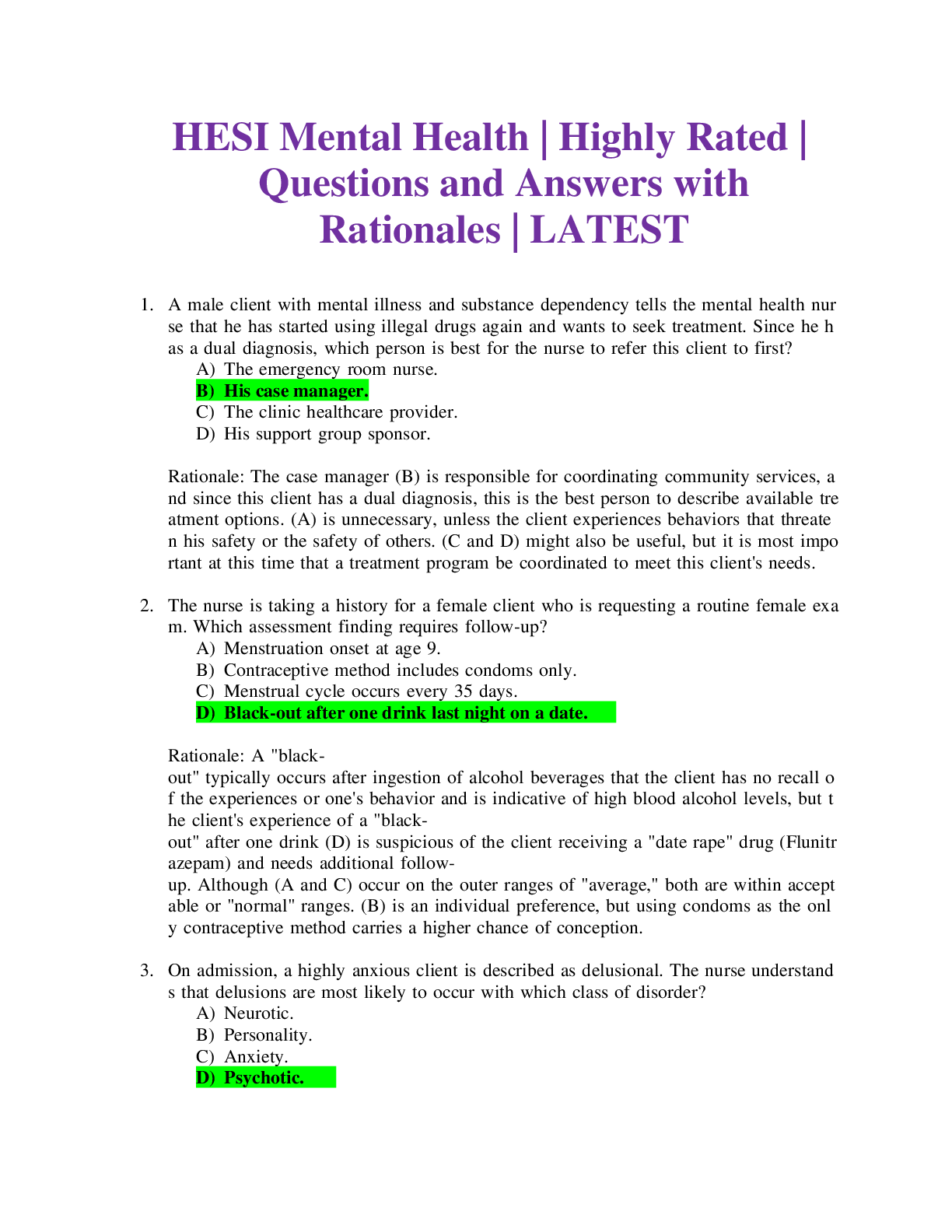

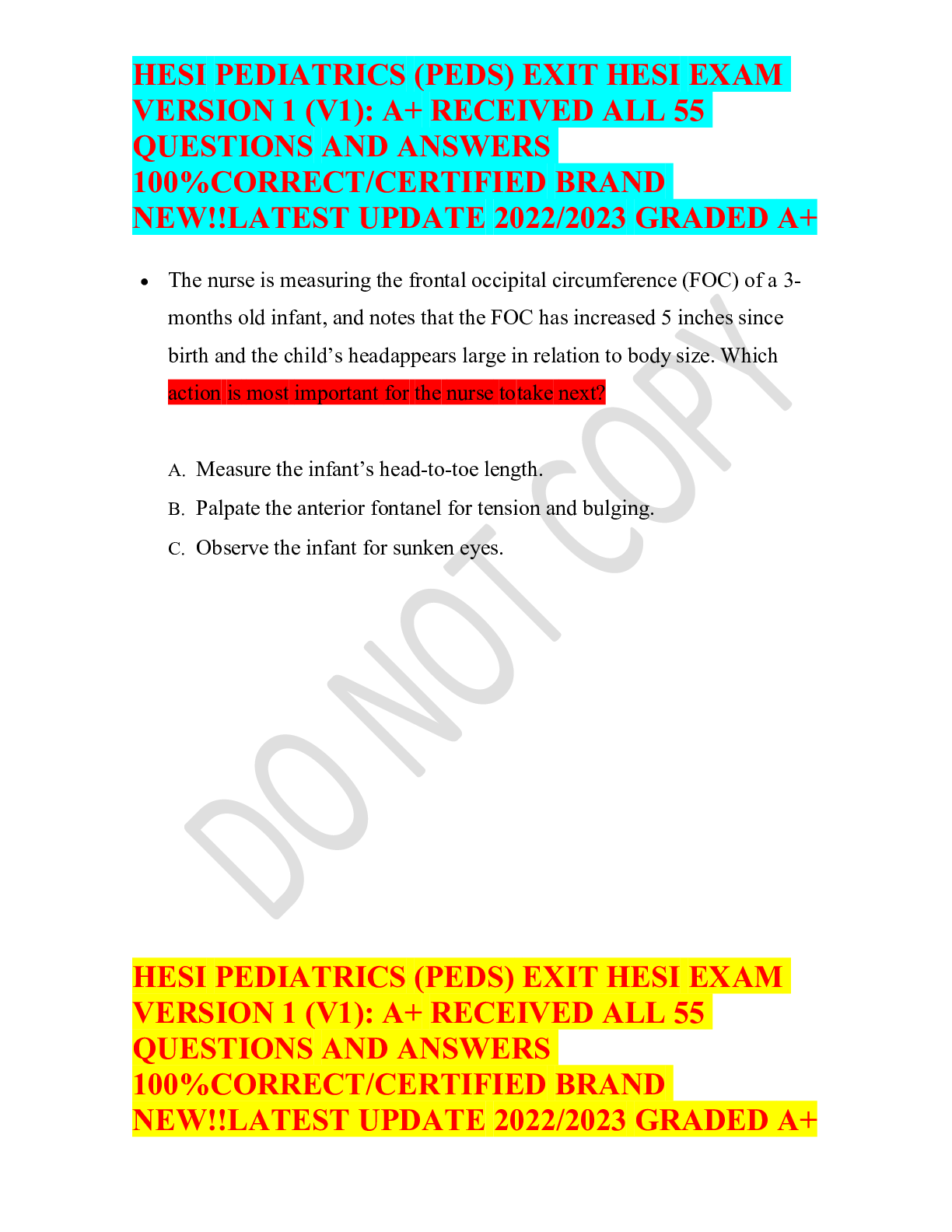
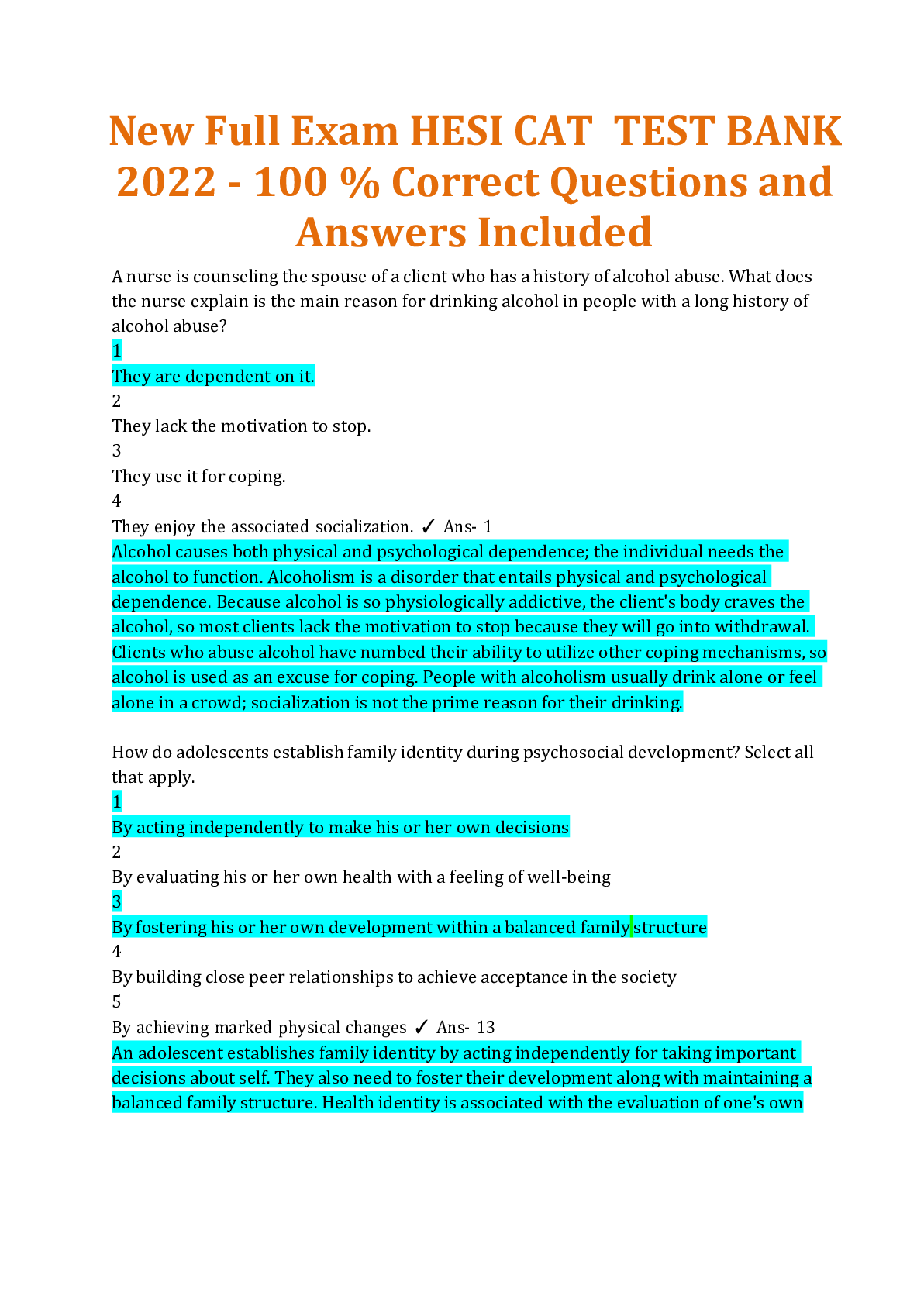
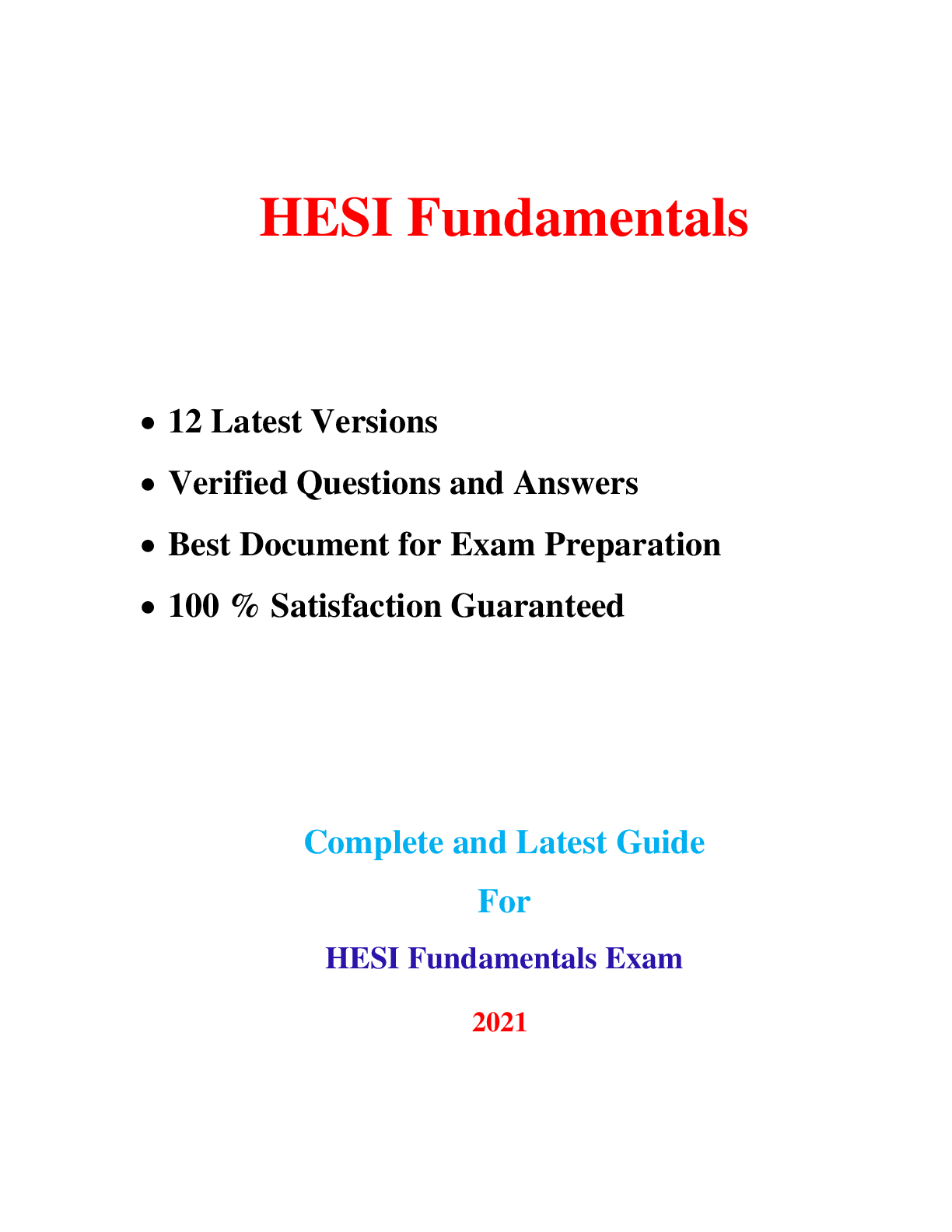

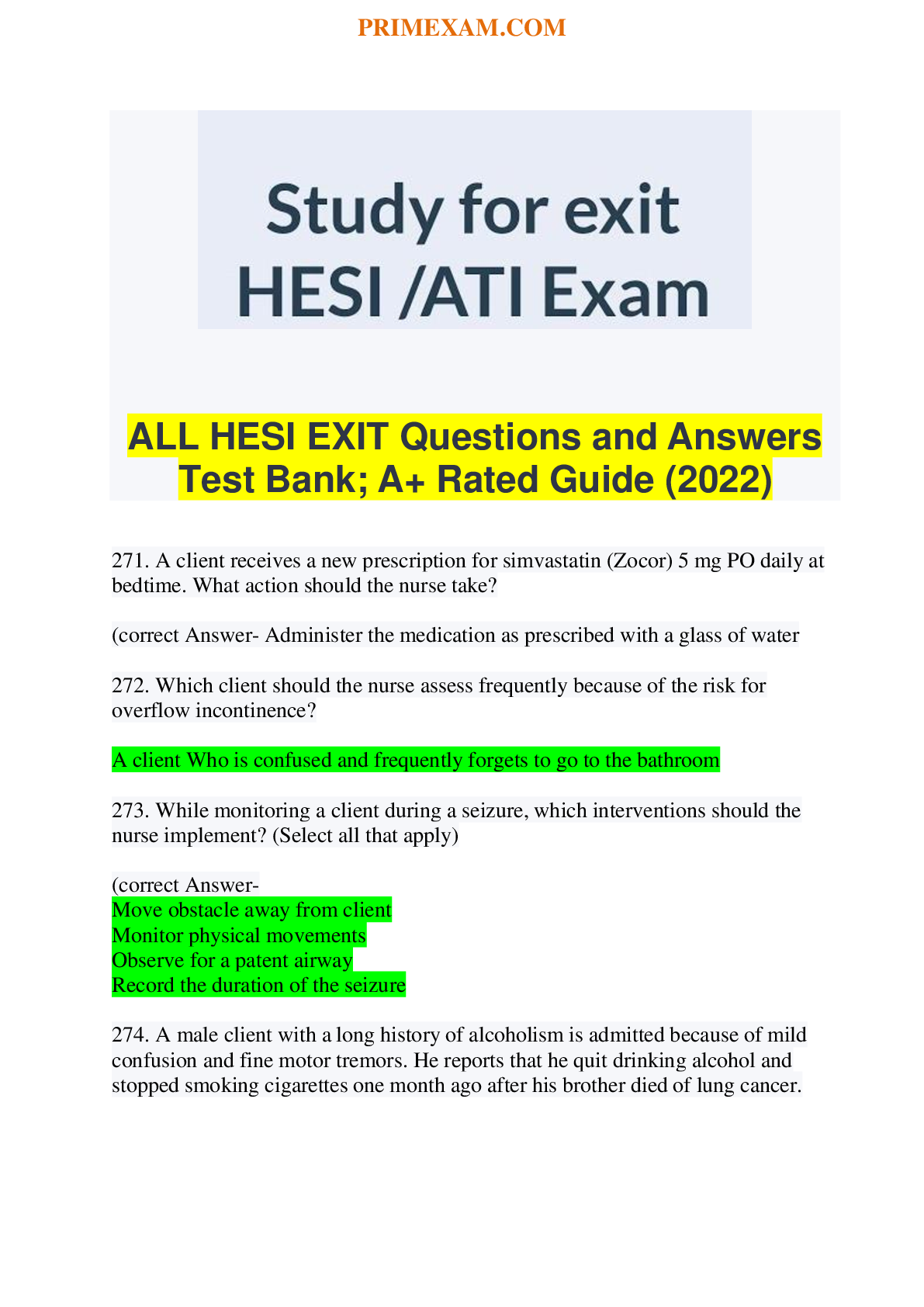
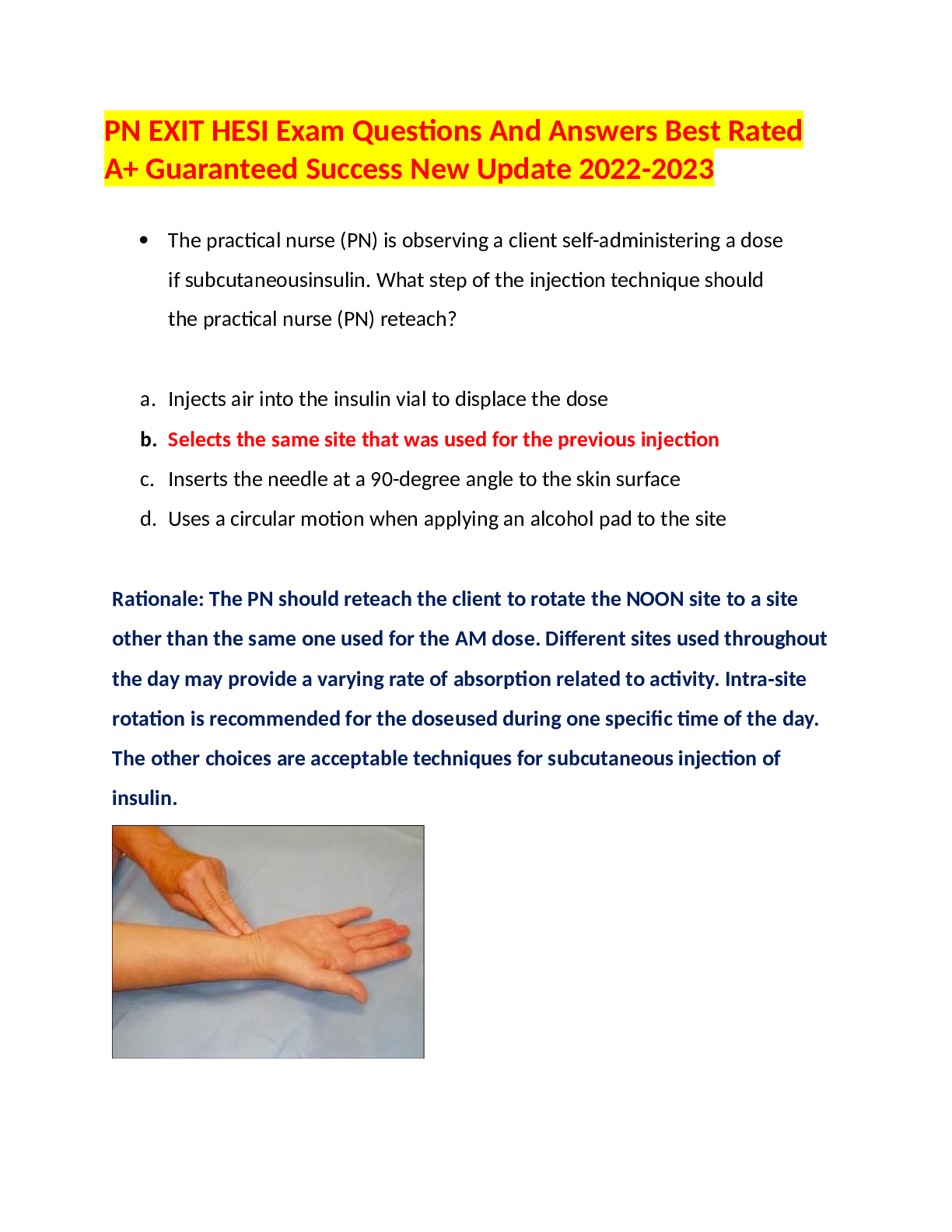
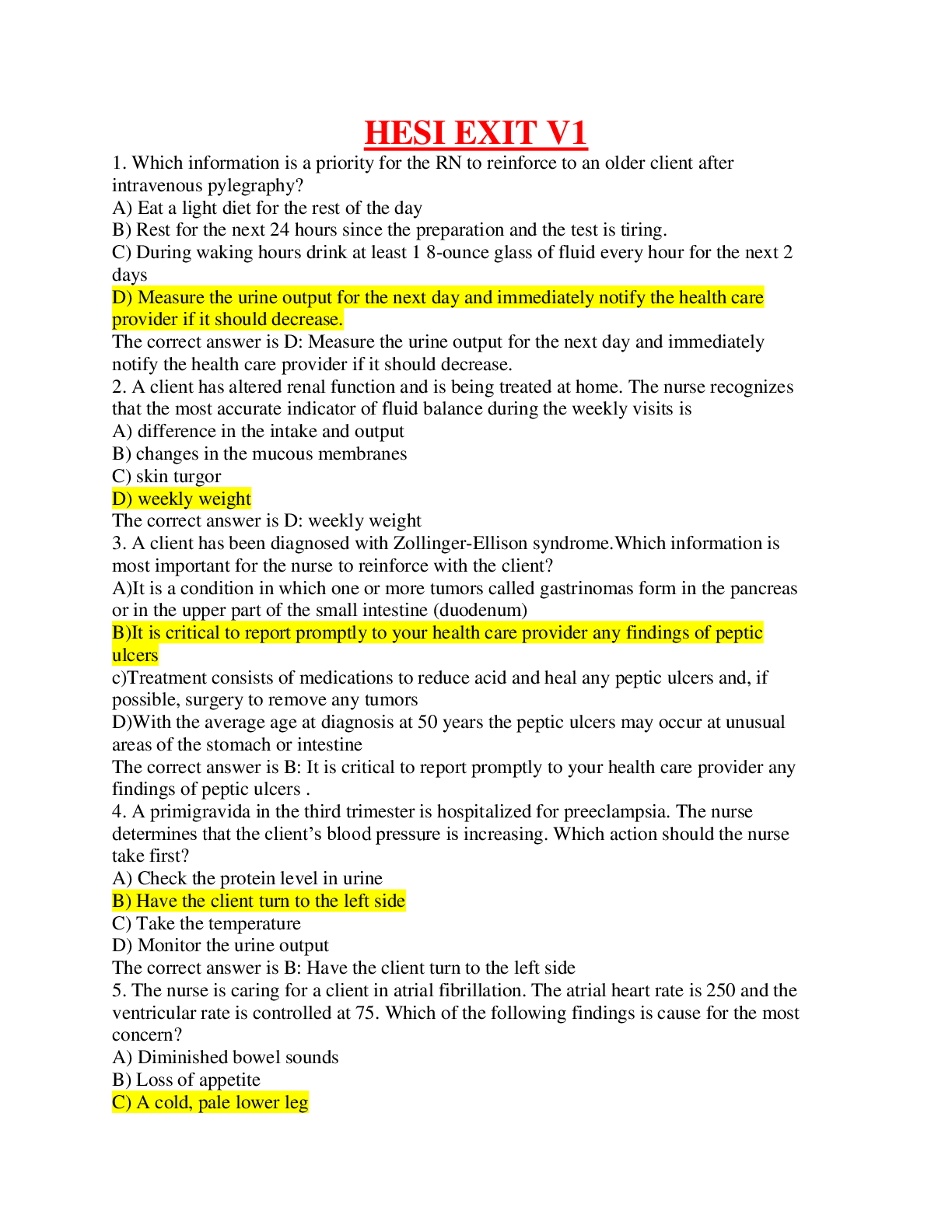

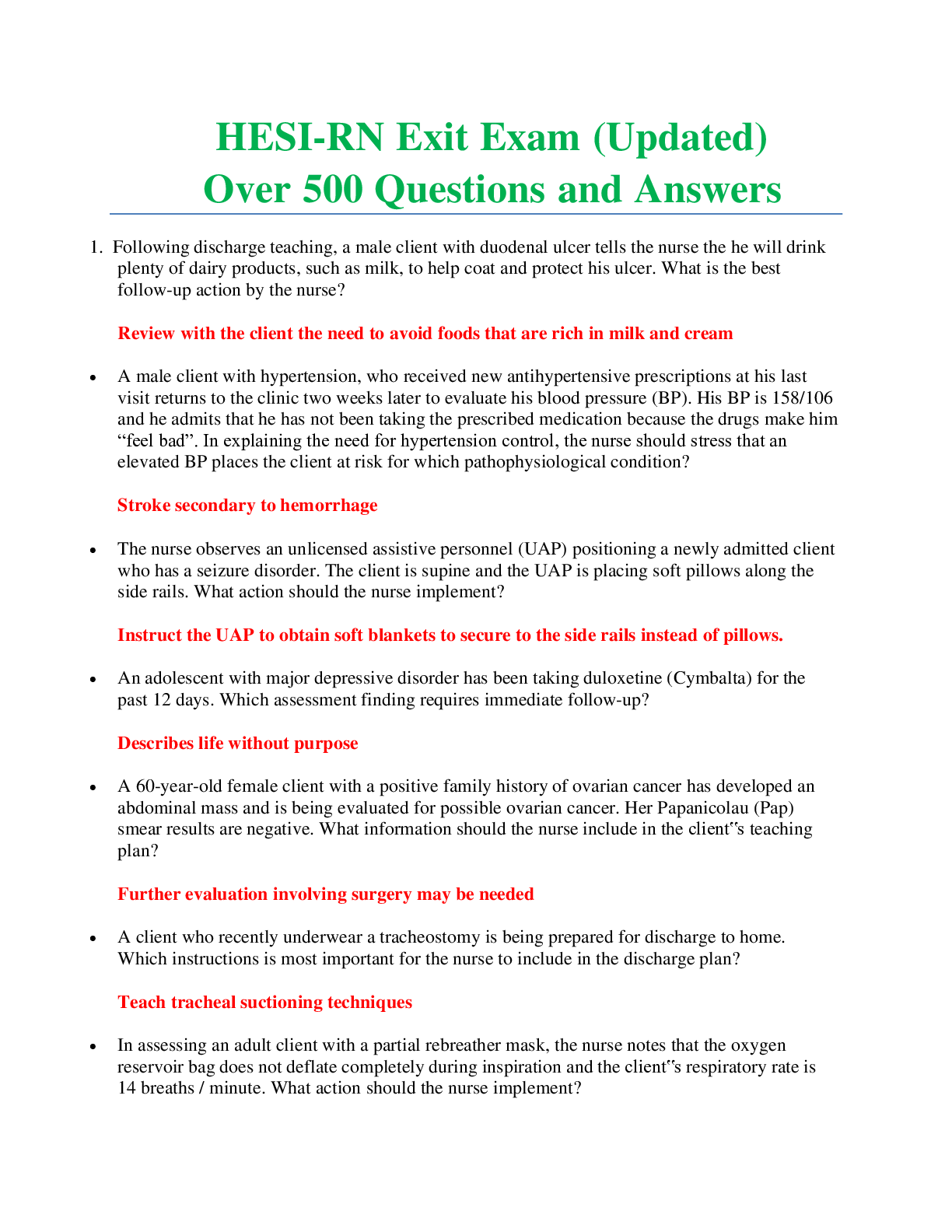
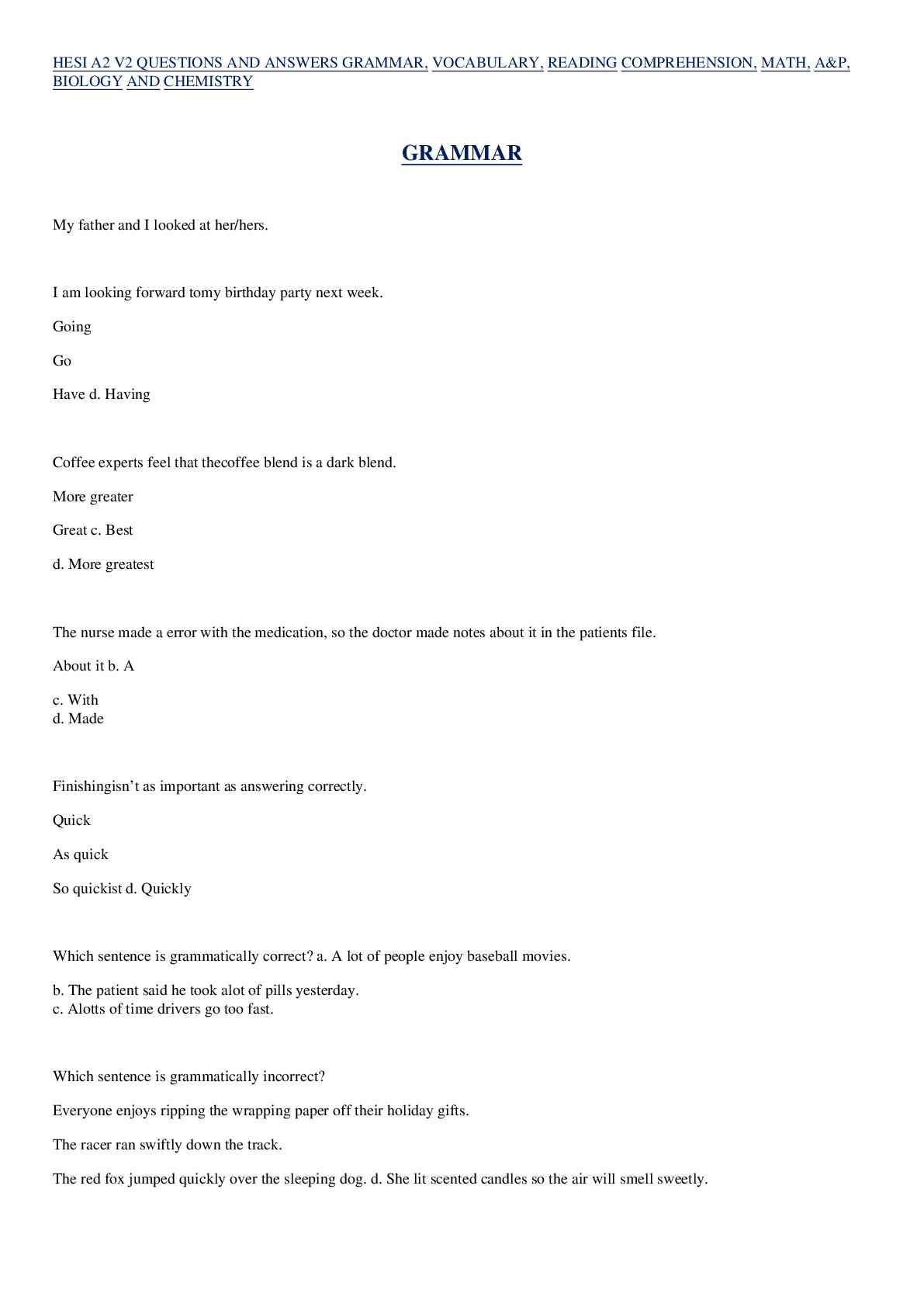

.png)
